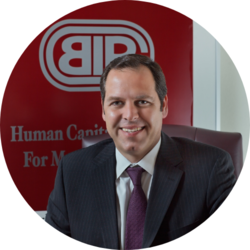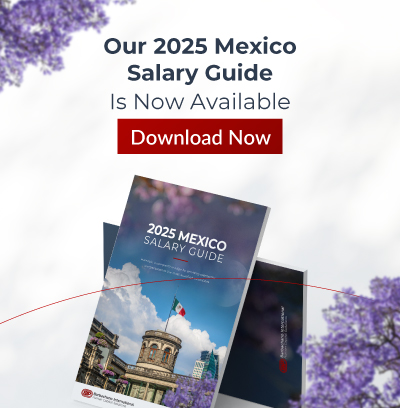
How to Land Your First Executive Role
If a plum executive position is ready to fall from the corporate tree, it will only fall directly into the waiting hands of a person who is poised under the tree with arms outstretched, ready to catch it. A plum-like that doesn’t fall to the ground and lies there until somebody happens by and decides to scoop it up. In fact, let’s be honest; that kind of plum doesn’t usually fall at all. Somebody with an eye on the prize will pick it as soon as they see that it’s ripe.
When you feel like you’re ready to move into a C-suite role, your days of scouring internet job search sites (i.e., the plums on the ground) should be behind you. That approach will most likely no longer serve you well.
Let’s take a look at KP (I’ve used only his initials, per his request), a successful Consumer Packaged Goods (CPG) executive, and analyze how he positioned himself for his first C-suite appointment. By arranging your steps in the same pattern, you too will be able to land your first executive role.
Begin with Executive Role in Mind
KP had a ready answer when a company higher-up posed the ubiquitous interview question, “Where do you see yourself in five years?” He said, in so many words, “In your seat.” Of course, he didn’t imply that he was going to tip the man (in this case it was a man) out of his seat, but rather that he would be ready when the time came to take on a larger role.
Far from arrogant, KP was projecting that he was A) confident, B) ambitious, and C) loyal. He still wanted to be there, working toward and contributing to that company’s success. And guess what? He was.
Beginning with the end in mind means many different things. It means getting the right, relevant education for your field. It means having the humility to start in lower roles to learn what you need to know and prove yourself. It means knowing, specifically, where you want to land finally. After all, if you don’t know where you’re going, you’ll inevitably wander.
Find an Executive Mentor
A good mentor is invaluable. KP established strong professional relationships and authentic friendships with existing executives at his company. He wasn’t afraid to ask them to show him the ropes and guide him up the steep promotional slope.
He understood, as do board members, CEOs, and stockholders, that internal hiring is six times more effective than all other sources of hiring. So he got to know the people who hired and made sure they knew him.
According to professional executive resume writer Matt Krumrie, a good mentor will motivate, challenge, provide guidance, and advocate for you during the course of your career. He or she can also be a good source of other connections, which leads us to our next point: networking.
Network, Network, and Network like an Executive
While he did move up into the executive ranks of the CPG company for which he worked, KP is currently holding his most-lucrative and rewarding executive position for the third CPG organization of his career. Both of the later companies he worked for recruited him because they knew him through his other professional and charitable networks.
These days, surveys suggest that up to 70% of all jobs are not published on public search sites, and this percentage is even higher for executive and C-suite roles. That statistic should indicate that well over half of executive positions are filled through networking. You want to be sought after? You need to be known. Get out there and volunteer, speak, serve, meet, and build a deep, wide network of people who know who you are and what you do.
Be a Lifelong Executive Learner
You don’t have to go back for another degree to be a lifelong learner, although it certainly doesn’t hurt. KP has an MBA, but he still regularly looks for field-related educational offerings through reputable institutions and takes them à la carte. His company has often paid for these courses (which is not unusual), but regardless, he recognizes that taking them is a worthwhile investment. Continued learning keeps him up-to-date and relevant, shows a real commitment to his career, and looks fantastic on a resume.
Happ Klopp, a Hult professor and 20-year Founder/President/CEO of The North Face, maintains that, “Gaining the right academic credentials can sometimes be the key to an executive-level role.” If you show this kind of initiative, you’ll not only become more qualified, you’ll get noticed.
The key to landing your first executive role is preparation. Know where you want to go, be willing to start at the beginning, meet and work with the people who can help you get there, educate yourself every way you can, and you will be poised to catch (or pick!) your plum.

By Fernando Ortiz-Barbachano
President and CEO of Barbachano International (BIP),
The Human Capital Solutions leader in Mexico, Latin America, and the USA, offering high-impact executive search, executive coaching, and outplacement.
About Barbachano International
Barbachano International (BIP) is the premier executive search and leadership advisory firm in the Americas (USA, Mexico, Latin America, & Canada) with a focus on diversity and multicultural target markets. Outplacement and Executive Coaching services are provided by our sister allied company Challenger Gray & Christmas. Since 1992, BIP and its affiliates have impacted the profitability of over 50% of Fortune 500 Companies. BIP has been recognized by Forbes as Americas’ Best Executive Search Firms and currently ranks #27 and #3 on the West Coast. Headquartered in San Diego, California with satellite offices in Florida and Mexico. As member-owners of NPAworldwide Recruitment Network, we are supported by partner offices in over 50 countries.



